by Matthew Orwat | Sep 18, 2017
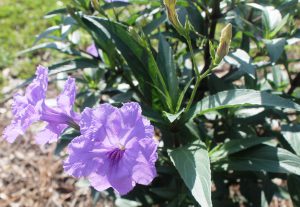
Individual Ruellia ‘Mayan Compact Purple’ flower. Image Credit: Matthew Orwat
Avid horticulturists often get frustrated when attractive, floriferous, versatile, durable, and easy-to-grow plants get sidelined because they have been declared an invasive species. Ruellia simplex (commonly known as Mexican petunia) was declared a category 1 invasive in 2001 by the Florida Exotic Pest Plant Council, described as “a plant that is altering native plant communities by displacing native species, changing community structures or ecological functions, or hybridizing with natives” (Source: UF/IFAS Center for Aquatic and Invasive Plants).
It produces copious amounts of seed year-long, which do not require exposure to cold weather (stratification) or mechanical damage (scarification) to germinate. Its excellent garden characteristics such as prolific flower production, and adaptability to varying light, temperature and moisture levels also increase its invasive potential.
Fortunately, recent developments in the field of plant breeding have developed several sterile Ruellia cultivars that have demonstrated low invasive potential in field trials. UF / IFAS researchers have developed the MayanTM series, which includes four distinct new cultivars: ‘MayanTM White’, ‘MayanTM Pink’, ‘MayanTM White’ and’ MayanTM Compact Purple’. They are available to the public through various licensed nurseries.
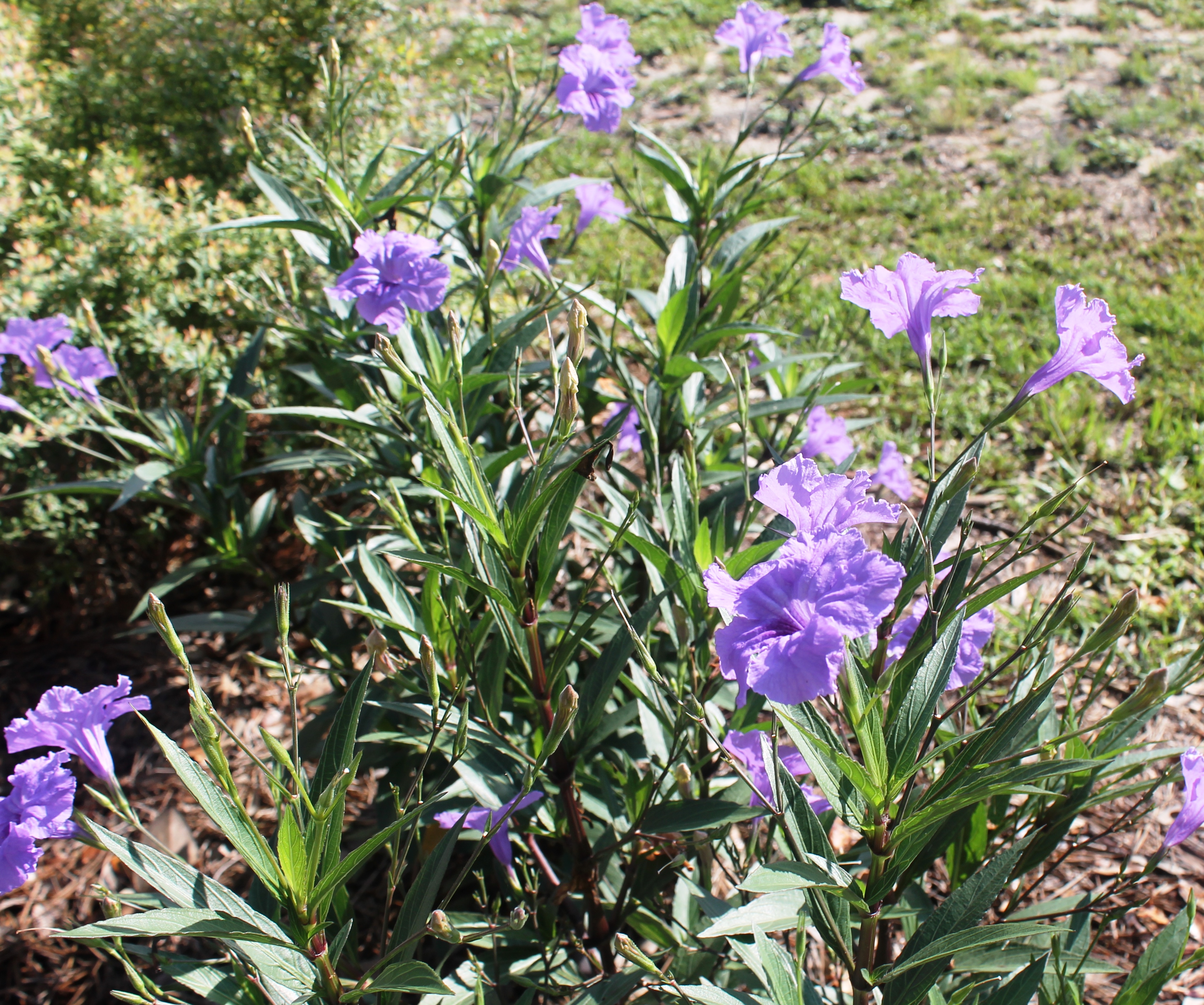
Three month old plant of Ruellia ‘Mayan Compact Purple’ in full flower. Image Credit: Matthew Orwat
This spring, UF/IFAS Extension agents were given the opportunity to try MayanTM Series Ruellia at their local offices. I opted to try the ‘MayanTM Compact Purple’ cultivar and so far it has been an excellent landscape plant. It is shorter than other Ruellia cultivars and has adequate branching throughout so as to not look leggy. It blooms regularly and flowers have a nice, purple hue. It does not mind full morning sun but benefits from afternoon shade, particularly during the hot summer months. So far, it seems like an excellent selection for plant borders or areas where a durable source of color is needed. Additionally, it produces no fruit and very little viable pollen, so it does not have potential to hybridize with naturalized Ruellia simplex populations.
Although this is a sterile selection, it can still multiply by rhizomes. While I have not observed any invasive behavior in ‘MayanTM Compact Purple’, I have just tested it in one location.
For more information consult this article from Florida Foundation Seed Producers and one from Hort Science on the ‘MayanTM Compact Purple’ cultivar.
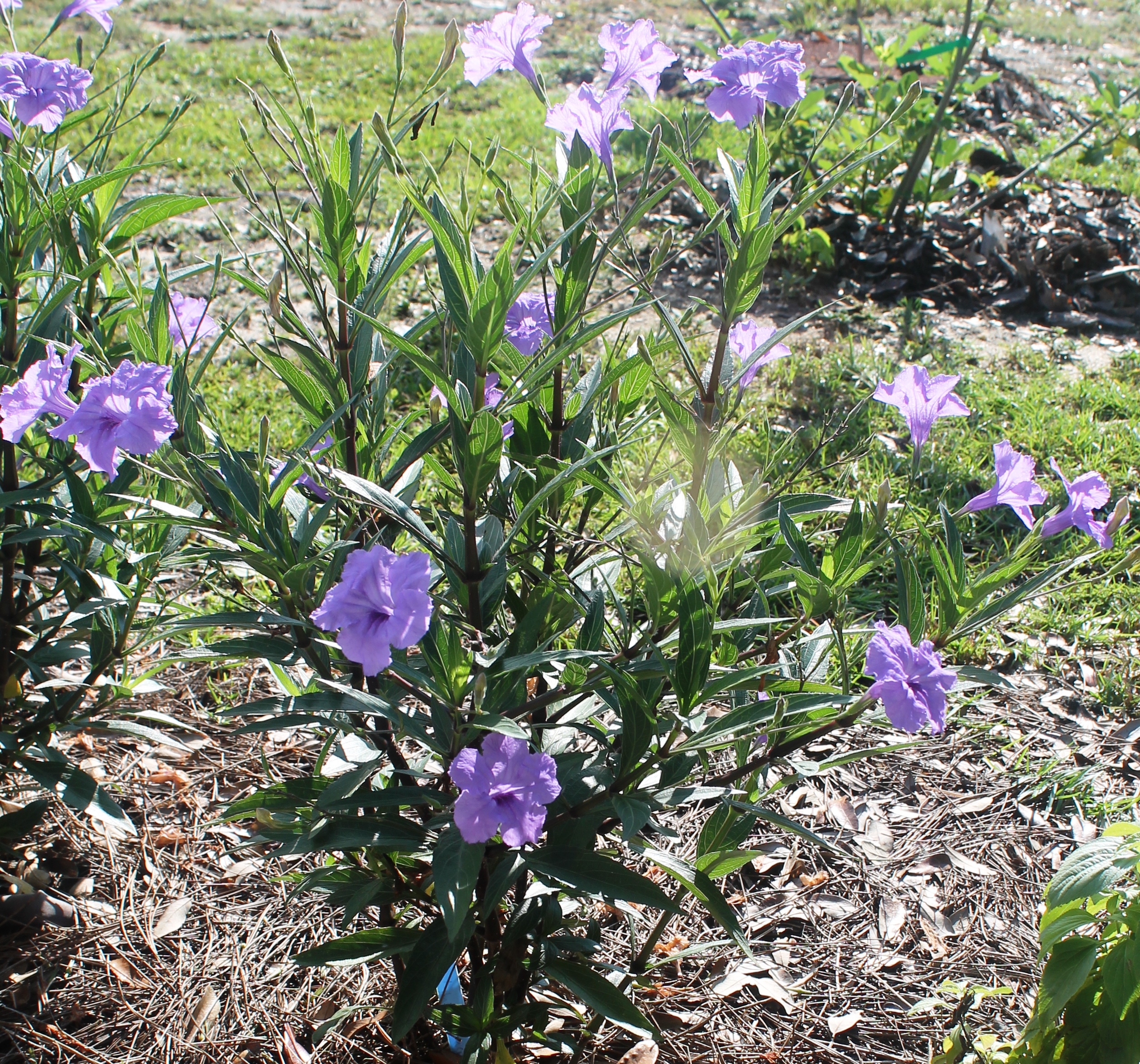
Ruellia ‘Mayan Compact Purple’. Image Credit: Matthew Orwat
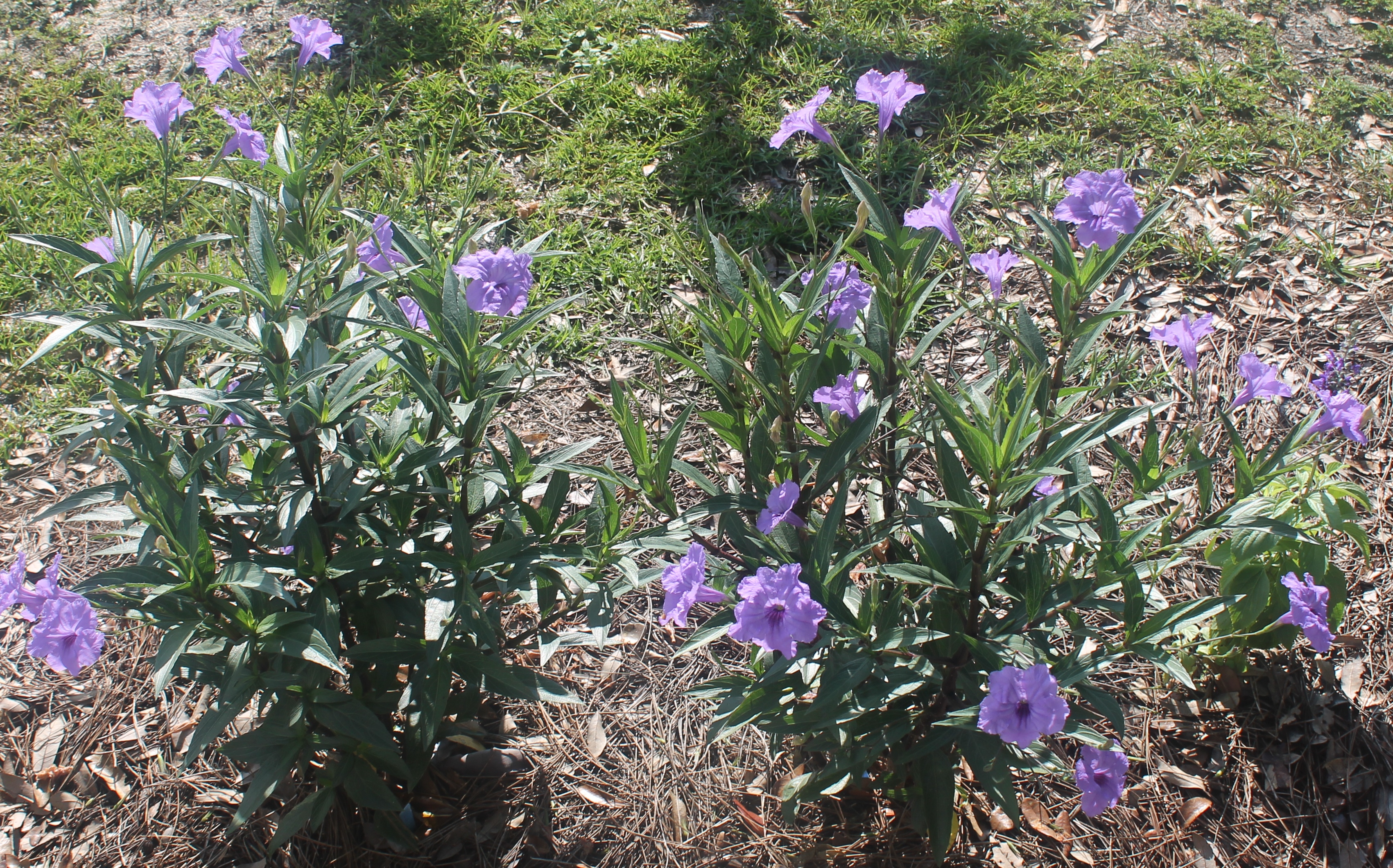
Ruellia ‘Mayan Compact Purple’ Image Credit: Matthew Orwat
by Molly Jameson | Sep 18, 2017
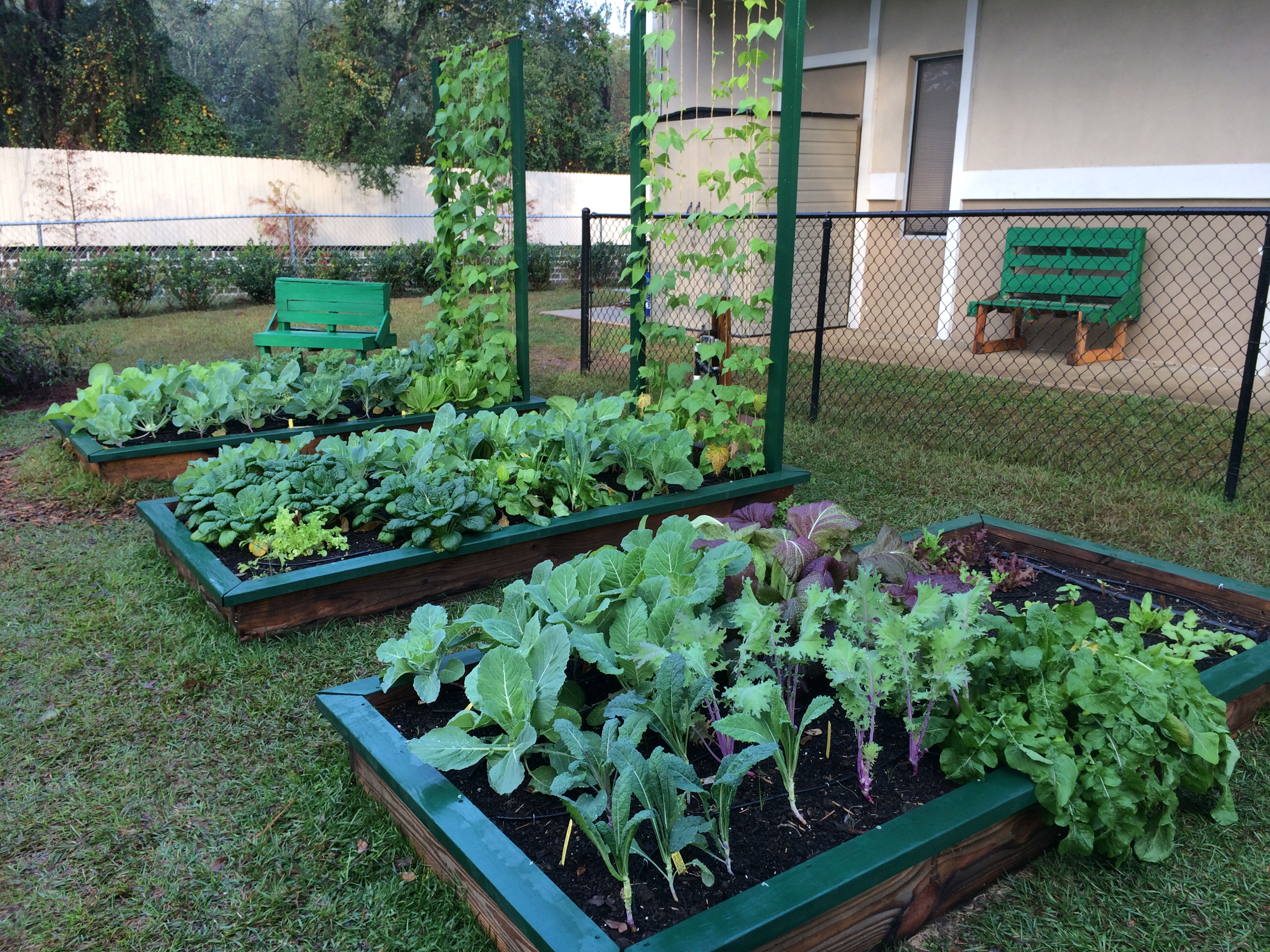
The Garden Educator Training Series helps garden leaders start or improve their school or community garden. Photo by Molly Jameson.

By Tiffany Torres
Tiffany Torres is the Family Nutrition Program Northwest District Food Systems Specialist with UF/IFAS Extension.
With the cooler months of fall upon us, school gardens across the Panhandle are beginning to awaken from their summer slumber. Soon, students and teachers will begin to replenish the soil, plant their seeds, and dive into an engaging edible education experience.
For these schools and communities, gardens are much more than just a few beds of carrots. School gardens serve as outdoor classrooms, bringing academic concepts to life in new and exciting ways, while also encouraging environmental stewardship. In addition, school gardens can expose students to lifelong healthy eating habits by inspiring them to try new fruits and vegetables. In time, the school garden can become a facet of school culture and pride, ultimately reinforcing an overall healthier school food environment for students, teachers, parents, and the broader community.
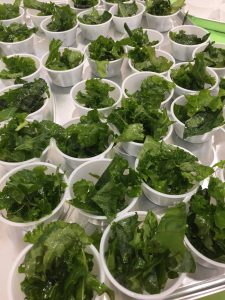
School gardens can inspire students to try foods, impacting their eating habits long-term. Photo by Molly Jameson.
To help support teachers and other school garden stakeholders on this journey, specialists at the University of Florida IFAS Extension Family Nutrition Program developed a seasonal school and community garden training. The “Garden Educator Training Series” provides teachers and volunteers with tools for improving school garden education, enjoyment, and long-term outcomes. This monthly education and networking opportunity welcomes teachers who want to start and sustain school gardens, college students who want to volunteer with local gardening projects, and other garden enthusiasts, such as Master Gardeners, who want to lend their time to ensure the success of school and community gardens.
Each session includes three engaging components: 1) seasonally relevant, hands-on gardening skills; 2) curriculum and education connections; and 3) community organizing strategies to build team commitments. Sessions also include an opportunity to share successes and challenges amongst fellow attendees, resulting in a stronger school and community garden network. Each garden project leader will build a “Living History Binder,” which they will fill with resources throughout the series and use with their team to help organize their garden projects.
Through the Garden Educator Training Series, it is our hope that everyone involved will gain tangible and valuable skills to launch or improve their school or community garden projects. The program will give educators the tools necessary to design their gardens to be outdoor classrooms; promote health and wellness through gardening; facilitate community engagement; and teach students valuable life skills such as teamwork, cooperation, focus, and patience – inspiring the next generation of “garden leaders, not just garden weeders.”
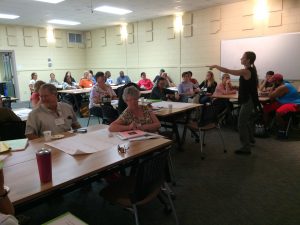
The Series provides teachers and volunteers networking opportunities and tools to improve school garden education. Photo by Molly Jameson.
Interested in participating in the Garden Educator Training Series? The Series is free of charge, and will take place at the Leon County Extension Office (615 Paul Russell Rd, Tallahassee, FL). Fall sessions are 4:30 to 6:30 p.m. on September 14th, October 12th, November 9th, and November 30th. To register, visit the UF/IFAS Leon County Eventbrite website (https://leongetsfall2017.eventbrite.com).
For further information, please contact the UF/IFAS Extension Office at Leon County by calling (850) 606-5200.
by Julie McConnell | Sep 18, 2017
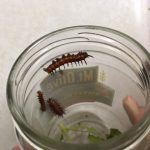
A glass jar with the lid secured is one method of bringing a live insect sample to your local Extension Office. Photo: JMcConnell, UF/IFAS
One of the roles of a Horticulture Extension Agent is to help identify pests found in the landscape. Weeds are fairly easy for people to sample, simply take some pictures or dig it up and bring it into the office, but what about insects?
Slow moving insects may be easy to photograph and if their size, shape, and coloration is very distinctive that may be enough for a good identification. But sometimes a photo isn’t worth a thousand words and the best way to get accurate identification is to bring in a physical sample.
The quality of the sample is going to either help or hinder with identification, so here are some tips:
- Never leave samples in a hot car – insects desiccate and become brittle in intense heat. Some details such as number of antennae segments or tarsi on legs are used to positively identify insects; missing pieces can lead to misidentification.
- Bring a live sample if it can be done safely and securely. Small, disposable plastic containers, jars with tightly sealing lids, and reused food or medicine containers work well.
- Small insects such as ants can be collected using a paintbrush dipped in rubbing alcohol which can then be swirled to release the ants into a vial/jar containing a small amount of alcohol. Small soft bodied insects can be collected this way, but may lose their color which may impede identification.
- Crushed or otherwise damaged samples should not be submitted.
- Limit samples to landscape or household pests – your local Extension Office is not a medical facility and is not equipped to handle or process samples that contain bodily fluids, skin scrapings, or similar materials. Please consult a physician for suspected human parasites.
Other helpful information that can be used for identification is the location of the insect, behavior (active night/day), and food source if known.
If insects must be mailed, please follow packaging directions found in this publication Insect Identification Service.

by Mark Tancig | Sep 18, 2017
Hopefully, by this time of year, most north Florida gardeners have harvested their figs and are enjoying fig preserves or fig bars. But if you’ve noticed your fig leaves dropping a little early, it may be a sign of the fungal disease Fig Rust (Cerotelium fici).
Figs are a great fruit tree for the north Florida home garden. Not only do they provide a tasty reward (if you can keep the birds and squirrels away), but they are fairly easy to maintain and are bothered by relatively few pests and diseases. One of the few diseases that can be common, however, is fig rust, especially when conditions are favorable. In the case of fig rust, a fungus, warm humid weather is what it likes and well, we have plenty of that.
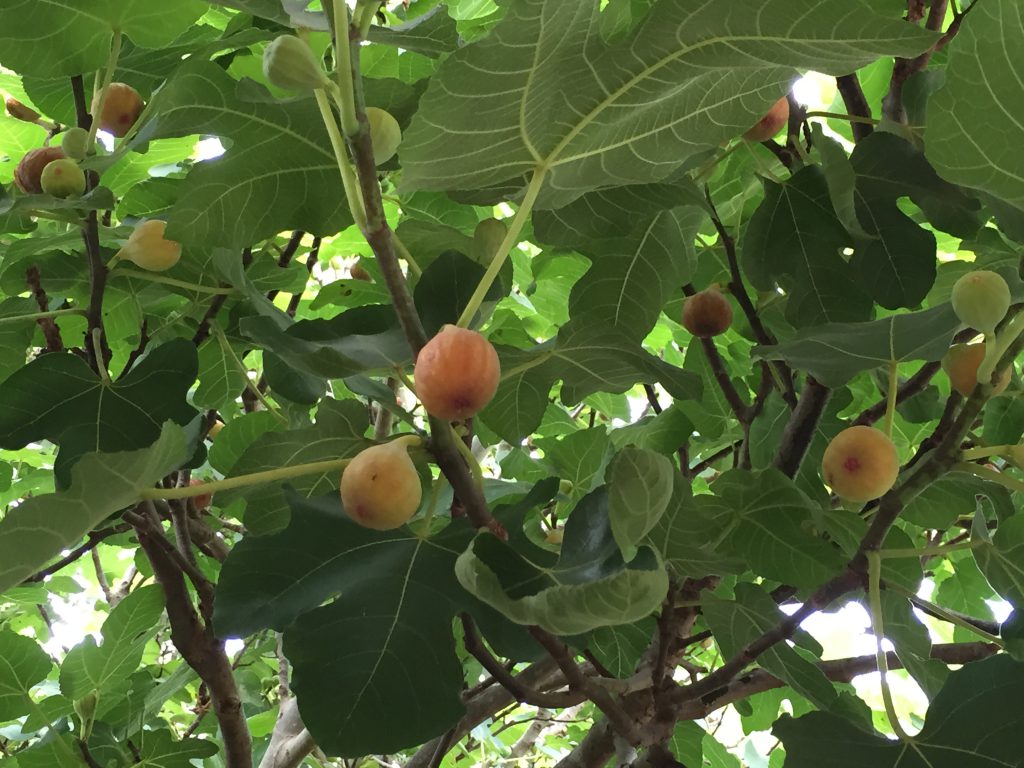
Figs are a great fruit tree for North Florida. Credit: Mary Derrick, UF/IFAS.
The first signs of the fig rust disease are small yellow to yellow-green spots/lesions on the upper surface of the leaf that turn a reddish-brown color as they get larger. A heavy infestation causes the leaves to turn yellow and drop early. While fig rust does not injure the fruit, repeat occurrences of premature leaf drop can adversely affect the overall health of the tree, resulting in yield loss. Another concern is that if the leaves drop too early, the tree will flush out with new growth heading into winter. This new growth can be injured by early freezes and cause a loss of fruit the following season.

Fig rust on leaves. Credit: UF/IFAS.
What can you do to prevent and/or cure fig rust? Unfortunately, once you see the yellowish-green/reddish-brown spots on the leaves, it’s too late to provide any control. As always, proper cultural practices can help. Pruning the tree to provide adequate airflow keeps the leaves as dry as possible during our humid summers. Remember to prune fig trees in Florida after fruit harvest, not in the dormant season, since fruit is borne on previous year’s growth. Another cultural control to prevent fig rust is to rake diseased leaves out from under the tree. The fungal spores in the fallen leaf litter pass the disease on to next year’s leaves. Other cultural controls include providing adequate moisture and placing a healthy dose of mulch around the tree. Figs require minimal fertilizer. Using a general complete fertilizer with micronutrients (such as a 10-10-10), young trees should receive 1 cup (1/2 pound) and mature trees 4-8 cups (2-4 pounds) per year.
There are currently no chemical controls approved for fig rust in Florida. The classic Bordeaux mix is recommended by various authors to be used as a preventative fungicide during the dormant season, before the lesions appear on the leaves. The Bordeaux mixture is a mix of copper sulfate, lime, and water in a 1:1:10 ratio and is considered an organic pesticide. This mix has been used since the late 19th century and was discovered by accident after botanists and farmers realized that grapevines sprayed with the mix to deter theft had less fungal problems. As with any pesticide, be cautious when using. Overuse of copper-based fungicides can cause copper to build up in soils, leading to potential issues to plant and human health.
While figs are generally worry free for our area, fig rust is one disease to be on the lookout for. Good gardening practices can reduce the occurrence of this disease and ensure a bountiful harvest. For questions on growing figs or about the fig rust disease, visit the UF/IFAS EDIS website – edis.ifas.ufl.edu – or contact your local Extension office.
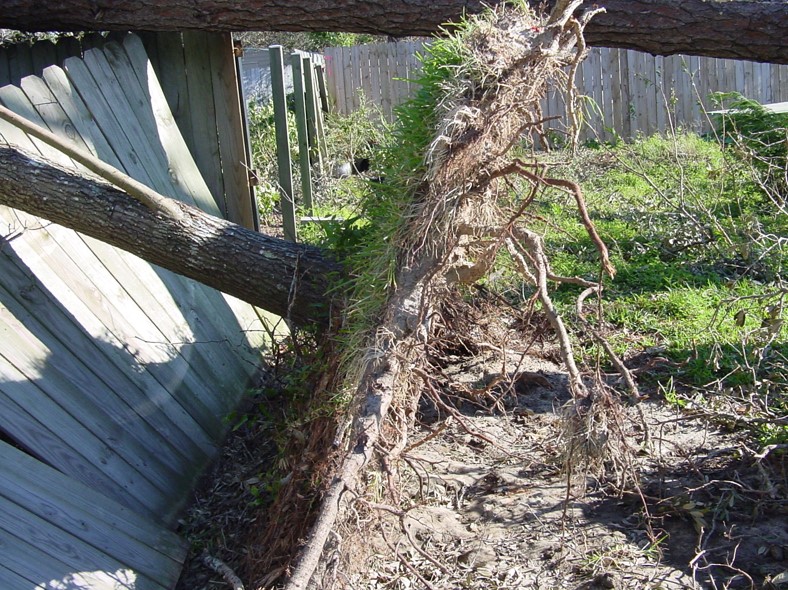
by Carrie Stevenson | Sep 8, 2017
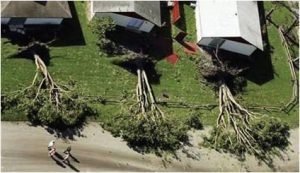
Trees are often among the first victims of hurricane-force winds. Photo credit: Mary Duryea, University of Florida.
Well, it is the peak of hurricane season (June 1-November 30), and this one is proving to be no joke. After having all summer to heat up, Gulf and Atlantic water temperatures peak in late August-mid September, feeding storms’ strength. Legendary hurricanes like Harvey, Katrina, and Andrew all made landfall during this time of year. The models for Irma show likely impacts in Florida, and due to its extreme size, most of the state is in line to endure heavy rain and wind regardless of location.
From a landscaping perspective, hurricanes can be truly disastrous. I will never forget returning home after evacuating from Hurricane Ivan and realizing all the leaves had been blown from nearly every tree in town. Mid-September suddenly looked like the dead of winter. A Category 3 storm when it landed near the southwest corner of Escambia County, Ivan was responsible for a 40% loss of tree canopy in our county.
Even if the Panhandle is not directly impacted by a storm, it is always smart to prepare. Research conducted by University of Florida arborists and horticultural specialists have yielded some practical suggestions.
To evaluate trees for potential hazards;
- Know your tree species and whether they are prone to decay or wind damage (more below).
- Look for root or branch rot—usually indicated by very dark spots on the bark.
- Tree structure—is there a single, dominant central trunk? Are branches attached to the trunk in a U-shape (strong) or V-shape (weak)?
- Smart pruning—never “top” (cut the tops from trees) but instead prune crowded limbs and remove limbs that are dead, dying, or hanging above power lines.
As for species selection, keep in mind that pines generally do not perform well in gale-force winds. Longleaf pines are quite strong, but common slash pines often snap or lean in storms. Even if a pine tree survives, it can be vulnerable to damage or death from pine bark beetles. It is wise to monitor pines for up to 2 years after a storm.
In addition, a survey conducted throughout the southeastern United States after hurricanes from 1992-2005 yielded important information on the most (and least) wind-resistant tree species. Live oaks and Southern magnolias topped the list, while pecans and cherry laurels performed poorly. This full, user-friendly report from the study is a useful tool.
For more hurricane preparedness information, visit the UF IFAS Extension Disaster Manual online or contact your local Extension office or Emergency Management agency.














